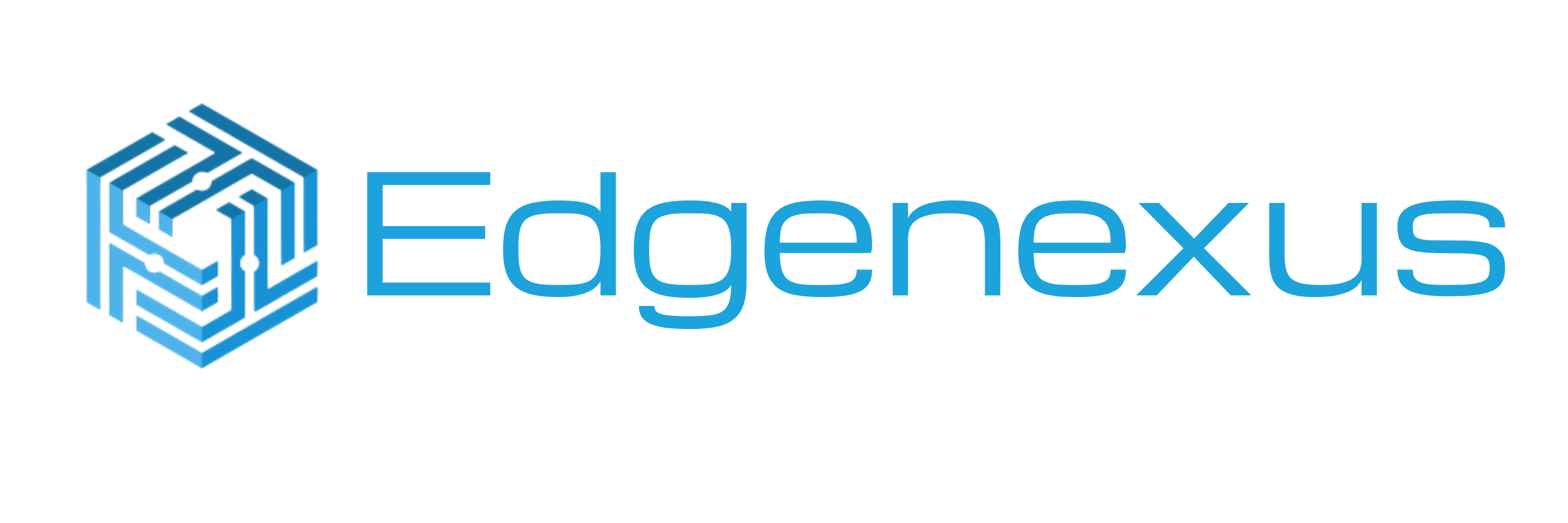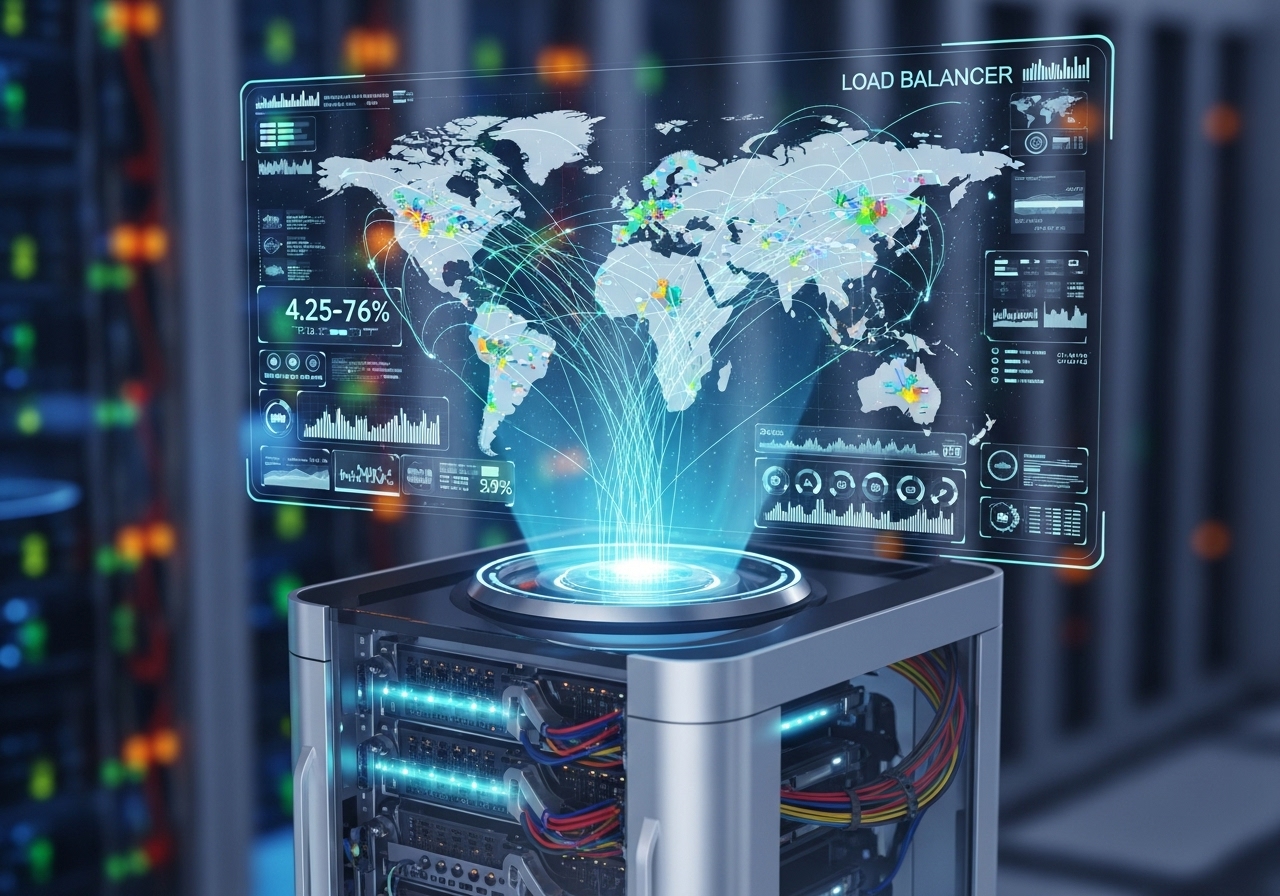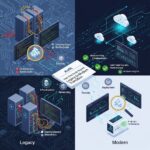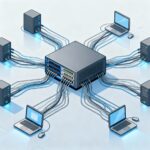Are you ready for 2026? It’s not just another year on the calendar for many businesses in worldwide. If your crucial applications rely on Global Server Load Balancing (GSLB) from providers like Citrix, F5, or Netscaler, 2026 marks a significant deadline.
Many of these legacy systems will reach their End-of-Life (EOL) or End-of-Service (EOS) around this time. This means dwindling support, increasing security risks, and a potentially unstable future for your critical applications. Now’s the perfect time to plan your migration to a modern global server load balancer.
Sticking with outdated technology can feel like a constant headache – spiraling costs, frustrating performance lags, and the gnawing worry of security breaches. A proactive shift can future-proof your infrastructure and give you a competitive edge. This guide will walk you through the reasons, strategies, and benefits of moving to a modern GSLB solution like Edgenexus.
Understanding Global Server Load Balancing (GSLB): Beyond Basic Load Balancing
What exactly is Global Server Load Balancing, or GSLB? Think of it as the ultimate traffic controller for your websites and applications. If your business has servers in Mumbai, Bengaluru, and perhaps even abroad, GSLB ensures your customers always connect to the best-performing server.
GSLB works by intelligently directing user requests to the most appropriate data center or cloud region. It often uses DNS-based traffic steering, which means it guides users before they even reach your application server. It also performs continuous health monitoring across all your global locations. This way, if one data center faces issues, traffic is automatically routed elsewhere.
Key Benefits of GSLB
GSLB offers several crucial advantages for any modern enterprise. These benefits extend far beyond simply distributing traffic.
Disaster Recovery & Business Continuity: GSLB is a cornerstone of strong disaster recovery planning. If a regional outage occurs, say in Chennai, GSLB can instantly redirect all traffic to your Hyderabad servers. This ensures your applications stay online, preventing costly downtime and keeping your business humming.
Optimal User Experience: It directs users to the closest or best-performing server. This geo-load balancing means a customer in Delhi connects to a server right there in Delhi (or super close by!), slashing wait times and making your site feel lightning fast.
Global Application Scalability: As your business grows, GSLB allows you to expand your application infrastructure globally. It distributes incoming traffic across multiple geographic locations, handling increased demand smoothly and efficiently.
Operational Efficiency: Modern GSLB solutions provide a centralized view and control over your global traffic. This simplifies management and troubleshooting, making your network operations more efficient and less prone to errors.
GSLB differs significantly from local load balancing. A local load balancer distributes traffic among servers within a single data center. GSLB, on the other hand, operates at a much broader scale. It manages traffic across multiple, geographically dispersed data centers, ensuring network resilience and optimal performance across continents.
The Migration Imperative: Why Move Off Citrix, F5, & Netscaler GSLB?
The looming 2026 deadline for many legacy GSLB solutions is a major trigger for migration. However, there are many other compelling reasons to move away from older Citrix, F5, and Netscaler GSLB systems. These legacy platforms often come with significant pain points that hinder modern IT operations.
The 2026 EOL/EOS Realities
Understanding End-of-Life (EOL) and End-of-Service (EOS) is crucial. When a product reaches EOL, the vendor stops selling it. EOS means they stop providing support, security updates, and bug fixes. This can leave your applications vulnerable to new threats and compliance issues. It can also make it difficult to get help when things go wrong, increasing your operational risk significantly.
Legacy Pain Points
Existing Citrix, F5, and Netscaler GSLB users often face several challenges. These issues go beyond just the upcoming EOL dates.
High Total Cost of Ownership (TCO): Let’s face it, these systems are notorious for their hefty price tags. We’re talking expensive licensing, frequent hardware refreshes, and complex, costly operational expenses. Over time, these costs add up significantly.
Complexity & Manual Overhead: Legacy GSLB solutions are often difficult to configure, manage, and troubleshoot. Their complex interfaces and heavy reliance on manual processes mean increased operational overhead, eating up valuable time for your IT teams.
Lack of Cloud-Native Integration: Many older GSLB systems simply weren’t built for today’s cloud era. They struggle to integrate seamlessly with multi-cloud, hybrid cloud, and containerized environments, limiting your flexibility and scalability.
Limited Automation & DevOps Support: Modern IT relies heavily on automation and DevOps practices. Legacy GSLB often lacks robust APIs and integration, which really hinders agility and makes it challenging to incorporate GSLB configurations into your CI/CD pipelines.
Security Vulnerabilities: Keeping legacy systems secure is a constant battle. Patching and staying updated with the latest threats is tough, leaving your applications exposed and putting your data and users at risk.
Vendor Lock-in: Proprietary ecosystems can create frustrating vendor lock-in. This limits your choices, making it difficult to switch to more cost-effective or feature-rich alternatives and reducing your negotiating power.
A Modern Global Server for Load Balancer: What to Look For in an Alternative
When choosing a new global server load balancer, it’s vital to look beyond just basic traffic distribution. A modern solution should address the pain points of legacy systems and support your future IT strategy. It should integrate well with your multi-cloud strategy and embrace automation.
Key Features & Capabilities
Here’s what to prioritize when evaluating modern GSLB solutions:
Advanced Health Checks & Custom Monitors: The ability to precisely monitor the health of your servers and applications is critical. Look for solutions that offer customizable, granular health checks.
Intelligent Traffic Steering: Beyond simple round-robin, modern GSLB should offer smart routing. This includes Geo-proximity routing, latency-based routing, and weighted round robin based on server capacity or performance.
Seamless Multi-Cloud & Hybrid Cloud Support: Your chosen GSLB must work effortlessly across different cloud providers (AWS, Azure, Google Cloud) and your on-premises data centers. This ensures consistent application delivery everywhere.
Robust API for Automation & Orchestration: Automation is key for agility. A strong API (Application Programming Interface) allows you to manage GSLB configurations as code. This integrates with Infrastructure as Code (IaC) tools and your existing CI/CD pipelines.
Integrated Security: Look for built-in security features like Web Application Firewalls (WAF) and DDoS (Distributed Denial of Service) protection. SSL Offloading also helps improve performance and security.
Centralized Management & Observability: A single pane of glass for managing all your global traffic is invaluable. Comprehensive monitoring and analytics tools provide deep insights into your application performance and user experience.
Scalability and Performance: The solution must be able to scale effortlessly to handle increasing traffic volumes. It should also deliver high performance without becoming a bottleneck.
Edgenexus stands out as a leading alternative to legacy GSLB systems. It offers simplified configuration, making management much easier than older platforms. With Edgenexus, you’ll gain true multi-cloud flexibility, allowing you to deploy and manage applications across any environment. Its robust automation capabilities align perfectly with DevOps initiatives, significantly reducing manual effort. Furthermore, Edgenexus delivers these benefits with a focus on cost-effectiveness, helping to reduce your overall TCO.
Your GSLB Migration Strategy: A Phased Approach
Migrating your global server load balancer doesn’t have to be a daunting task. A well planned, phased approach can minimize risk and ensure a smooth transition. Here are the practical steps to consider:
Assessment & Planning
The first step is to thoroughly understand your current environment. Start by creating a detailed inventory of all existing GSLB configurations. This includes VIPs (Virtual IP addresses), health monitors, and all routing policies. Next, clearly define your migration
goals and success criteria. A pilot program for testing the new setup is highly recommended to iron out any issues.
Design & Configuration
Once you know what you have, you can design your new setup. This involves carefully mapping your legacy GSLB configurations to the Edgenexus GSLB. Plan your DNS integration and delegation strategy. Then, implement your new, advanced traffic policies, taking advantage of modern GSLB features.
Testing & Validation
Thorough testing is critical before you go live. Conduct pre-migration tests to verify DNS resolution and health checks are working correctly. Consider a phased traffic cutover, like canary deployments or blue/green deployments, to slowly shift traffic. Finally, perform performance and functional validation to ensure everything works as expected under real world conditions.
Post-Migration & Optimization
The migration isn’t over once traffic is switched. Continuously monitor your new GSLB setup with robust analytics. This helps you understand application performance and user experience. Look for opportunities for ongoing optimization of traffic steering policies. Leveraging automation for future changes will keep your infrastructure agile and responsive.
Minimizing Downtime and Risk
To ensure a smooth transition, always plan for redundancy. Have rollback plans ready in case of unexpected issues. Communicate clearly with all stakeholders throughout the process. A phased cutover dramatically reduces risk compared to a “big bang” migration.
Addressing Your GSLB Migration Concerns
1. Our current F5/Citrix/Netscaler GSLB setup is incredibly complex and expensive to maintain. How can a new GSLB solution genuinely simplify our operations and reduce our Total Cost of Ownership (TCO)?
Modern GSLB solutions, like Edgenexus, are designed with simplicity and cost-efficiency in mind. They often feature intuitive graphical user interfaces and robust APIs for automation, dramatically cutting down manual configuration time. This frees up your IT team to focus on strategic tasks, not constant troubleshooting.
Regarding TCO, newer platforms typically have more flexible licensing models, moving away from expensive hardware-centric approaches. Reduced operational complexity means less staff time spent on maintenance and fewer errors, leading to significant savings over time. You’ll avoid the high costs of hardware refresh cycles and expensive support contracts associated with legacy systems.
2. We’re looking to aggressively move towards a multi-cloud and hybrid cloud architecture. Will a modern GSLB solution integrate seamlessly with diverse cloud environments, and how does it handle traffic steering and disaster recovery across them, unlike our legacy system?
Absolutely! Modern GSLB solutions are built for multi-cloud and hybrid cloud environments from the ground up. They offer native integrations with leading cloud providers like AWS, Azure, and Google Cloud, letting you manage traffic across your entire infrastructure seamlessly.
Unlike legacy systems that might struggle with cloud elasticity, modern GSLB provides advanced traffic steering capabilities specific to cloud deployments. This includes dynamically directing users to the closest or healthiest resource, whether it’s on-premises or in a public cloud. For disaster recovery, they enable sophisticated cross-datacenter and cross-cloud failover strategies, ensuring your applications remain online even during major regional outages.
3. Our biggest concern during a GSLB migration is potential downtime or impact on critical applications. What strategies and features does a modern GSLB offer to ensure a zero-downtime, low-risk transition, especially with complex traffic policies?
Minimizing downtime is a top priority in any GSLB migration, and modern solutions totally get that. They facilitate phased migration strategies. You can set up your new GSLB right alongside your existing one, slowly shifting traffic over time using a “canary deployment” or “blue/green” approach. This allows for thorough testing at each stage without disrupting live services.
Key features include granular control over DNS records and health checks, which allow you to precisely manage when and how traffic is directed. Robust monitoring and rollback capabilities are also essential. If any issues arise, you can quickly revert traffic to your old system, ensuring continuous availability of your applications.
4. With the evolving threat landscape, how does a modern global server load balancer enhance our application security and compliance posture compared to the older solutions that often require separate, complex integrations?
Modern global server load balancers significantly enhance security by often integrating advanced protection features directly into the platform. This means capabilities like Web Application Firewalls (WAF), DDoS protection, and SSL/TLS offloading are built right in, simplifying your security architecture considerably.
Unlike older solutions that might require multiple, separately managed security appliances, a modern GSLB offers a more unified security posture. This reduces complexity and helps ensure consistent application of security policies across all your global deployments. It also makes it easier to meet compliance requirements by providing centralized visibility and control over your application traffic’s security.
5. Beyond just load balancing, we need a solution that aligns with our DevOps initiatives and allows for automation. How does a modern GSLB support Infrastructure as Code (IaC), API-driven configuration, and integration into our CI/CD pipelines to increase agility?
Modern GSLB solutions are designed to be super programmable and automation-friendly. They offer comprehensive RESTful APIs, letting you manage and configure all aspects of your GSLB programmatically. This means you can integrate GSLB configuration directly into your Infrastructure as Code (IaC) tools like Terraform or Ansible.
This API-first approach enables you to include GSLB changes as part of your Continuous Integration/Continuous Delivery (CI/CD) pipelines. Your network infrastructure becomes code, allowing for faster, more consistent, and error-free deployments. This significantly boosts your team’s agility and responsiveness to business needs, making GSLB a true enabler for DevOps.
Conclusion: Embrace the Future of Global Server Load Balancing with Edgenexus
Balancing with Edgenexus
The year 2026 is approaching quickly. It marks a critical turning point for businesses relying on legacy GSLB solutions from Citrix, F5, or Netscaler. Proactive migration isn’t just about avoiding risks; it’s about embracing a future of enhanced performance, greater agility, and significant cost savings.
Moving to a modern global server load balancer provides numerous benefits. You’ll gain stronger disaster recovery, a superior user experience, and the ability to scale your applications globally. A modern solution empowers your business with automation, cloud native integration, and robust security features that legacy systems simply can’t match.
Don’t wait until the deadline looms large. Take control of your infrastructure’s future today. Explore how Edgenexus GSLB can simplify your operations, reduce TCO, and future-proof your application delivery.
Take the next step towards a more resilient and efficient infrastructure. Contact us for a demo or explore our resources to learn more about a seamless GSLB migration.
FAQs
1. Why is it important to migrate away from legacy GSLB solutions like Citrix, F5, and Netscaler?
Legacy GSLB solutions are reaching their End-of-Life (EOL) or End-of-Service (EOS), which means they will no longer receive security updates or support. Migrating ensures your applications remain secure, reliable, and scalable.
2.What is Global Server Load Balancing (GSLB), and how does it benefit my business?
GSLB directs traffic to the most optimal server based on factors like proximity, performance, and availability, ensuring fast, reliable application delivery, disaster recovery, and business continuity.
3.What challenges do legacy GSLB solutions present to modern enterprises?
Legacy systems are often costly, complex, lack cloud-native support, and don’t integrate well with modern IT infrastructure like multi-cloud or hybrid cloud environments, leading to inefficiency and high operational costs.
4.How can a modern GSLB solution improve my Total Cost of Ownership (TCO)?
Modern GSLB platforms offer more cost-effective licensing models, easier management through automation, and reduced hardware requirements, which significantly lower both upfront and ongoing operational costs.
5.Will a modern GSLB solution work with our multi-cloud infrastructure?
Yes, modern GSLB solutions are built to seamlessly integrate with multiple cloud providers, allowing for effective traffic management and disaster recovery across diverse cloud environments.
6.How does a GSLB migration impact downtime and service continuity?
By using phased migration strategies such as canary or blue/green deployments, modern GSLB solutions allow you to transition without affecting service availability, ensuring minimal downtime and business continuity.
7.What security enhancements do modern GSLB solutions offer over legacy systems?
New GSLB platforms come with integrated security features like Web Application Firewalls (WAF), DDoS protection, and SSL offloading, providing a unified security framework to protect against emerging threats.
8.Can a modern GSLB solution support automation and DevOps practices?
Yes, modern GSLBs offer robust APIs for seamless integration with automation tools like Terraform, Ansible, and CI/CD pipelines, making them a perfect fit for DevOps environments.
9.How do I ensure the smooth migration of GSLB without risking critical applications?
A phased migration with thorough testing and rollback options is essential. Modern GSLB solutions allow for gradual traffic shifts and provide granular control over routing policies to minimize risks.
10.What features should I prioritize when choosing a modern GSLB solution?
Key features include intelligent traffic steering, multi-cloud support, customizable health checks, security integrations, centralized management, and robust automation capabilities to meet current and future needs.










